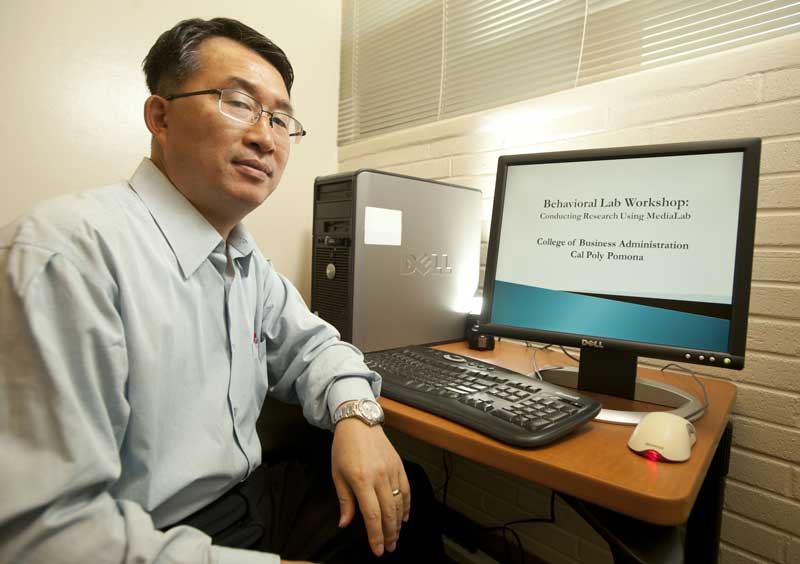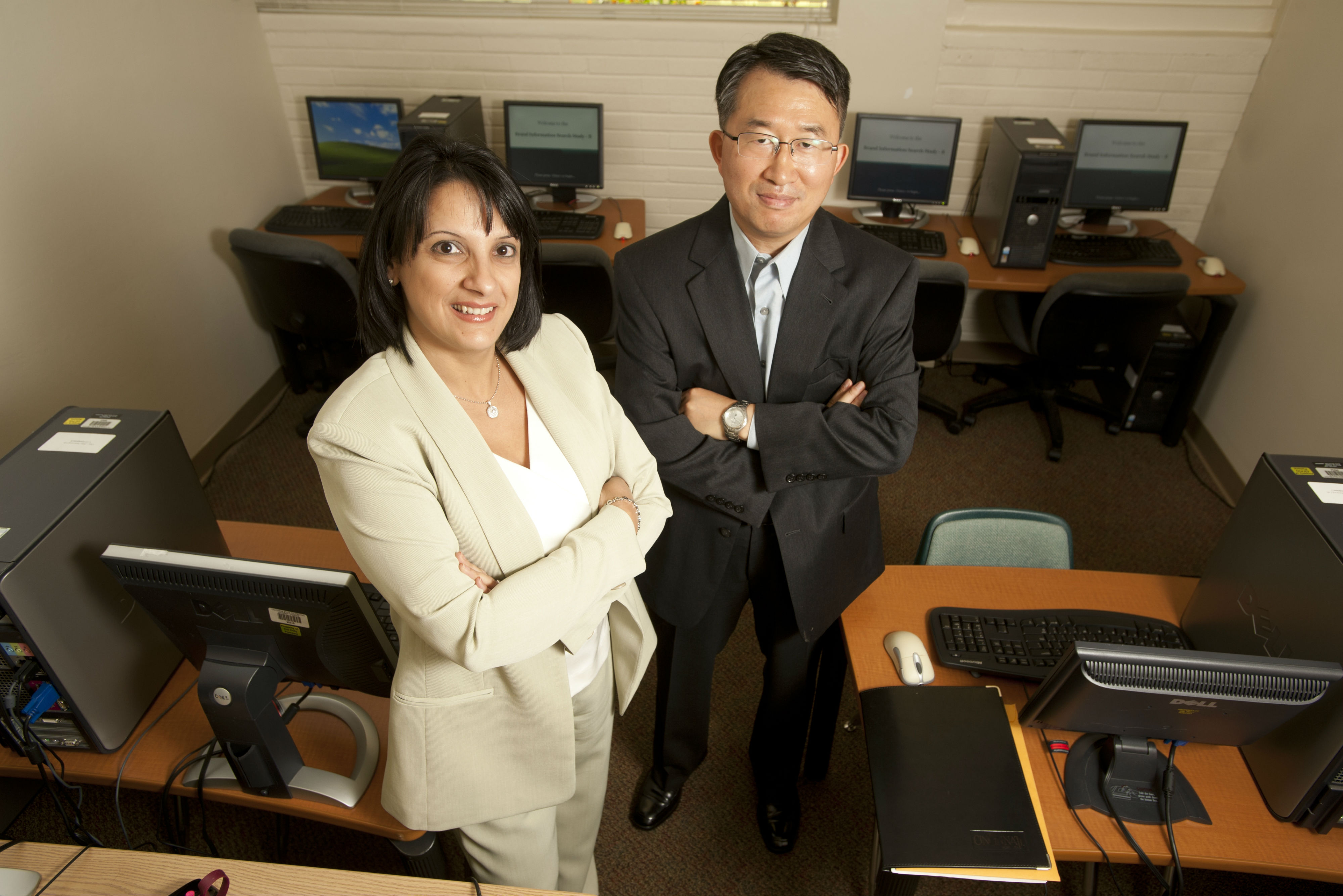Jae Min Jung Story

Laboratory Gives Faculty, Students Better Access to Market Research
One professor’s goal to increase his own productivity in academic research has dramatically changed the way business professors can access consumer opinions and behavior. In 2008, Associate Professor Jae Min Jung of the International Business and Marketing Department created the Behavioral Lab, modeling it after similar labs offered at other business schools.
Professor Jung met with CBA Public Affairs Officers Marisa Demers to talk about the lab and his ambitions to have it serve as a resource for businesses.
What is the purpose and mission of the lab?
Jung: The primary mission of the lab is to help faculty and students conduct research but there are additional benefits. Students who are involved as research participants have told us that they have a better understanding of marketing research, consumer behavior and other critical marketing concepts. Before each survey, we explain the proposal and, once the study is over, we debrief them so they have a better understanding of the study’s purpose. Students say they like participating more than simply listening to a lecture about marketing research. Further, the lab can be a catalyst for collaboration between academy and industry, offering a space for businesses to test their ideas.
Tell us more about the lab.
Jung: We have eight computers equipped with Media Lab software, which is a very powerful multimedia data collection tool. It allows us to create multimedia surveys that incorporate video, text, images and sound. It can also capture respondents’ behavior such as how many milliseconds it takes for students to answer questions. So, for instance, if it takes less than one second to read three lines of instructions, definitely the student didn’t pay attention. It can be a way to weed out some undesirable answers before you have to do data analysis.
Every quarter, we have, on average, 4 to 5 studies conducted with each lasting 15-30 minutes. Our professors and graduate students have examined how different cultural values influence the number of brands people evaluate before making purchasing decisions, under what circumstances metaphor advertising is effective and how superstitious beliefs affect consumers.
By winter quarter of 2011, the lab was so busy that I couldn’t handle it myself. So, I actually had student William Chan assist. He was so enthusiastic that, when I told him I didn’t have money to pay him, he said, “That’s OK, I Just want to learn.” He worked 10 hours a week unpaid as an intern. Right after winter quarter we were able to hire [2010 MBA graduate] Maha Ghosn. Maha not only assists in administering studies but also works behind the scenes in preparing the studies and working with subjects. Also, some faculty members are not familiar with the software yet, so Maha and I offer training workshops for all faculty members in the college.
How this idea came about?
Jung: It goes back to 2007 when I first came to Cal Poly Pomona. I worked at North Dakota State University, where I helped set up a behavioral lab and I was excited to offer the same thing here. Many administrators and faculty within the college thought it would be a good way of showcasing our learn-by-doing concepts.
Before the lab existed, how did professors access to this kind of data?
Jung: Sophisticated data were not possible to gather. The best you could have done was go to a classroom to distribute surveys. But, if there are 20-30 students in a class and you need over 200 participants, it was a time consuming process. You have to go to different classes, you have to talk to the professors and go when it’s the best time for the class so you are not actively interfering with a course. I’ve done that before and it can be disruptive to the class. With the lab, instructors’ times are freed up and participants’ responses are accurately recorded, eliminating data entry errors.
What are your long term plans for the lab?
